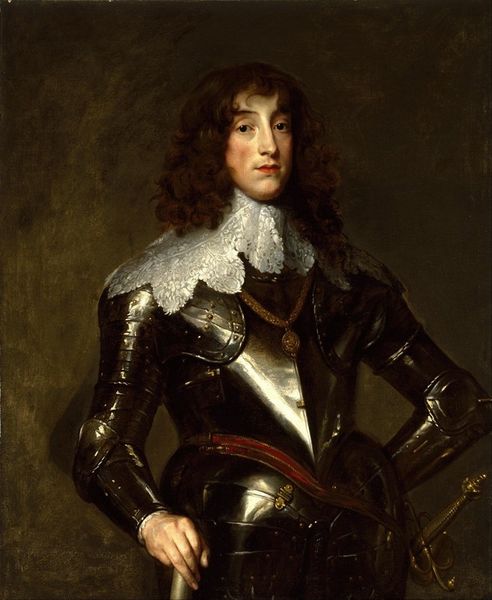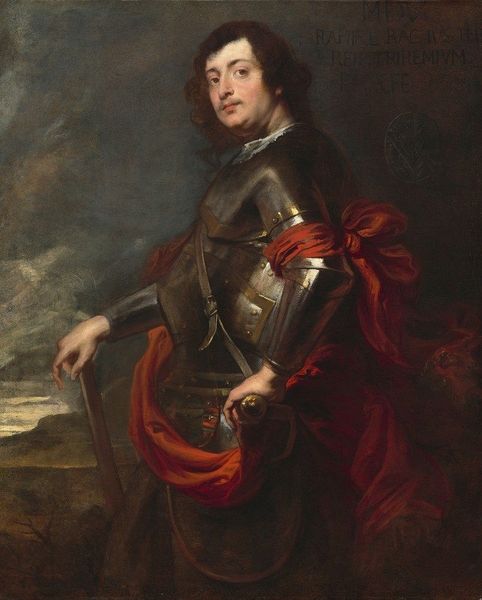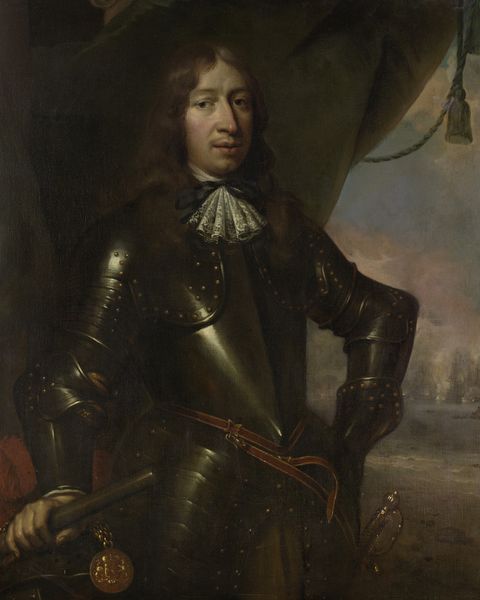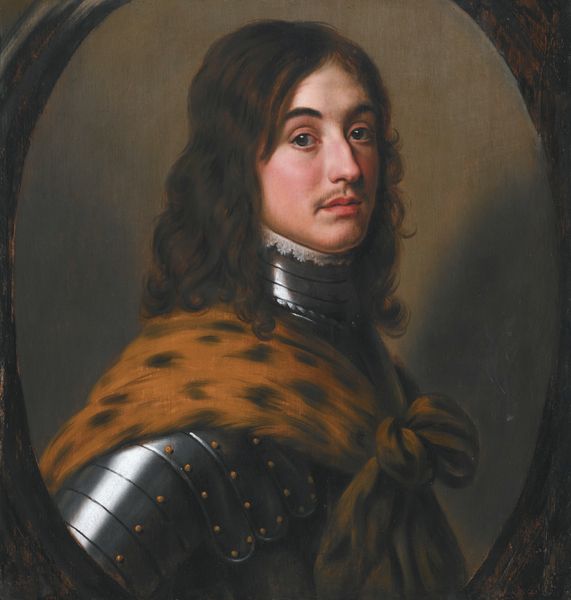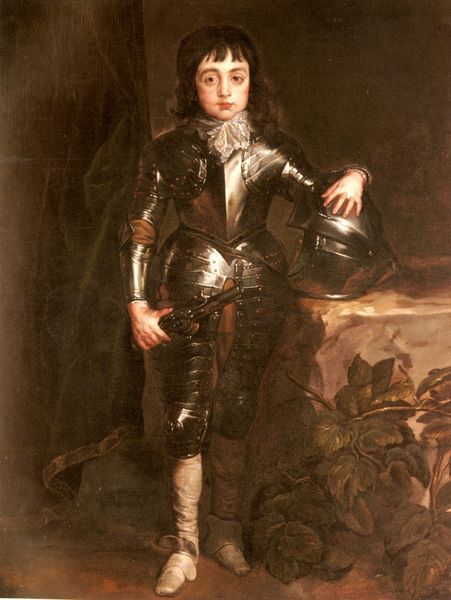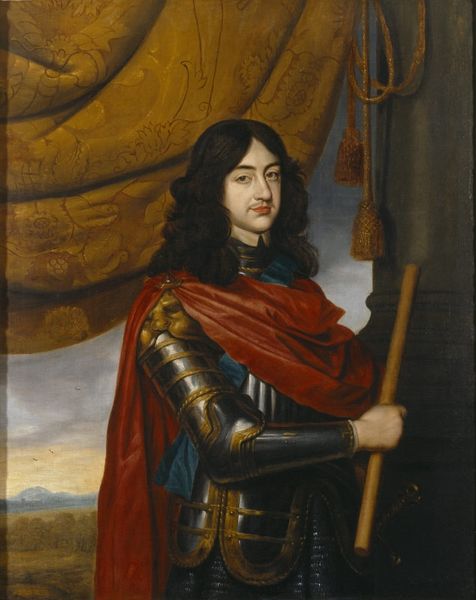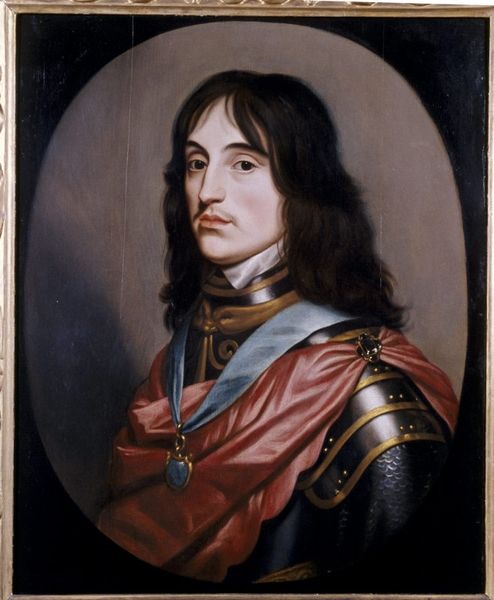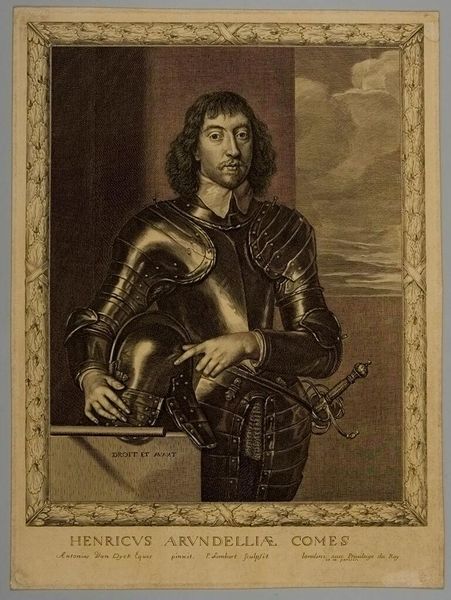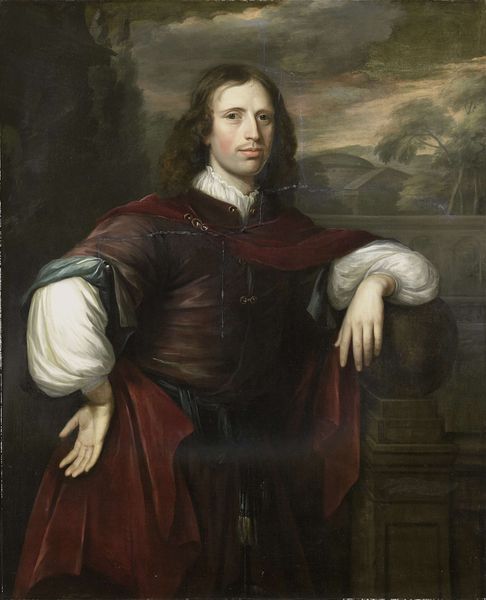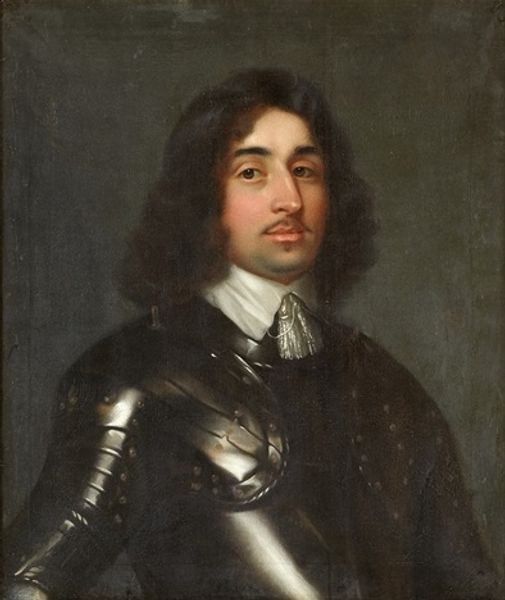
painting, oil-paint
#
portrait
#
baroque
#
painting
#
oil-paint
#
male portrait
#
history-painting
#
realism
Dimensions: 90 x 70 cm
Copyright: Public domain
Editor: This is Anthony van Dyck’s "Portrait of a Man in Armour with Red Scarf," painted in 1627, using oil paint. The reflections in the armor are incredibly striking. How would you interpret this work purely from its visual elements? Curator: Precisely. Note how the composition hinges on a study of textures. Van Dyck masterfully juxtaposes the rigid, reflective surfaces of the armor against the softness of the sitter's hair and the implied texture of the red scarf. Observe how the light catches the high points, creating a dramatic contrast against the darker, less defined areas. This tension underscores the image’s dynamism, doesn't it? Editor: It does, though it's quite subtle. I initially thought the contrast was just between the sitter and the background. Curator: But isn't that contrast further complicated by the almost imperceptible shift between light and shadow *within* the background itself? The lack of hard edges isolates the subject, turning our attention to the material contrasts *within* the subject's own form, doesn't it? How might this contribute to the reading of the overall structure of the portrait? Editor: So, the textures define the composition, creating contrast. The dark background intensifies that. The work transcends being just a portrait. Curator: Agreed. The brushwork, particularly in rendering the armor, employs visible strokes which activate the surface, refusing illusionistic depth. The portrait then is a dialectic—a tension between representation and pure painterly construction. Editor: I hadn't considered the visible brushstrokes before; that adds a whole new dimension. Curator: Indeed. The real "subject" might be the *act* of painting itself! Editor: Thank you. Thinking about the materiality opens my eyes to new approaches when viewing art.
Comments
No comments
Be the first to comment and join the conversation on the ultimate creative platform.
